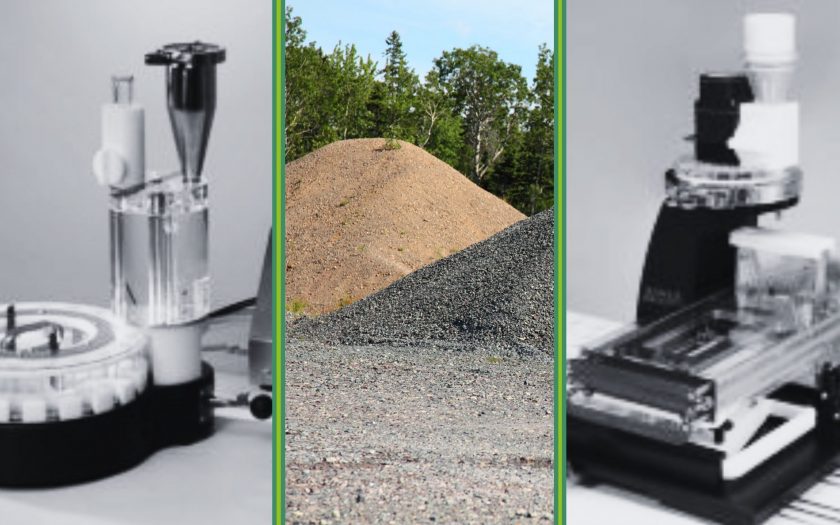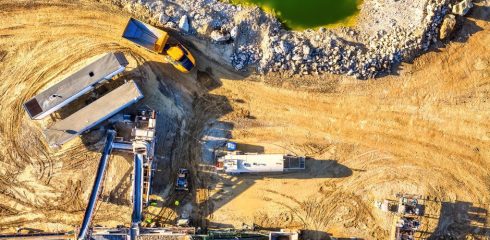
Powders and granular materials often resist predictability. They shift, separate, and behave in ways that compromise precision and consistency. Among the most critical phenomena are material segregation, fluidization, and a host of physical instabilities that arise during processing and handling. These effects can seem subtle, but their influence reaches across industries, quietly shaping everything from product quality to equipment design. Mastering the behavior of material segregation, fluidization, and their additional challenges is vital for achieving consistent performance in complex material systems.
Material Segregation
What Is Material Segregation?
Material segregation is the unintended separation of a blended material into distinct fractions, typically due to differences in particle size, shape, density, or texture. A mixture that begins as homogeneous can quickly become uneven as it flows, drops, or vibrates. This early stage of separation is often the beginning of material segregation. The shifts are not always visible. However, they can compromise consistency long before reaching the end product.
How Does Material Segregation Work?
Segregation occurs because particles within a blend do not behave uniformly during movement. Finer particles tend to slip through gaps and concentrate at the center of a pile or settle at the bottom, a process known as percolation. They are also more affected by air currents than larger or denser particles. On the other hand, the latter retain more momentum and often travel farther when dropped. Particle shape plays a role as well. Rounded particles tend to roll outward across piles. Meanwhile angular or irregular particles resist motion and settle near where they land. These varied movements gradually disrupt uniformity and cause separation that affects downstream consistency, leading to what is known as material segregation.
Why Is Material Segregation a Challenge?
Granular mixtures rarely stay uniform once they’re in motion. Pouring, transferring, or conveying often disturbs the balance, causing particles to separate based on size, shape, or density. This subtle shift can have significant effects and is one of the main drivers of material segregation. When it occurs, the resulting variation in composition can compromise dosing accuracy, weaken product structure, or lead to inconsistent sensory attributes.
How Is Material Segregation Managed?
- Modified equipment design to reduce free-fall distances, limit impact forces, and promote uniform material flow.
- Granulation or agglomeration techniques to minimize particle variability.
- Real-time monitoring to detect early signs of separation and maintain blend consistency during processing.
Fluidization
What Is Fluidization?
Fluidization is a process where a gas or liquid moves upward through a bed of solid particles at a speed that suspends them. The outcome is a bed that behaves like a fluid, flowing and mixing with high efficiency. It’s used widely in drying, coating, combustion, and catalytic reactions because it promotes even distribution of heat and mass across the entire particle bed.
How Does Fluidization Work?
In fluidization, gas or liquid flows upward with enough velocity to suspend solid particles, allowing them to move freely and expand the bed. If the particles circulate, they behave collectively like a fluid, with properties that depend on flow rate, particle characteristics, and vessel design. The induced motion improves contact between particles and the surrounding medium, promoting efficient transfer of heat and mass.
Why Is Fluidization Both Useful and Complex?
Fluidized systems are valued for their ability to enhance mixing, improve heat transfer, and support continuous processing. By suspending particles in motion, they produce a dynamic environment that helps maintain blend uniformity. However, this same complexity can introduce new challenges. Variations in particle size or density or inconsistencies in airflow may lead to renewed segregation, entrainment, channeling, or unstable flow.
How Is Fluidization Managed?
- Adjusted system parameters such as bed depth, gas velocity, and particle characteristics to sustain suspension and promote uniform flow.
- Cyclones and filters to capture entrained fines and minimize material loss during operation.
- CFD and DEM simulations to model flow behavior in advance and guide equipment design and setup.
Related Phenomena
Granular Convection
When granular materials are subjected to vibration, larger particles tend to rise to the surface. While this occurs, smaller ones migrate downward to fill gaps. Such behavior can unintentionally disrupt well-mixed blends during transport or packaging, leading to inconsistent composition across a batch.
Slugging and Channeling
Within fluidized beds, uneven gas distribution or poor flow conditions can form instability. Slugging occurs as large gas bubbles form, lifting chunks of material and interrupting uniform flow. Channeling allows gas to escape through narrow paths, bypassing much of the particle bed. Both effects reduce mixing efficiency and are typically addressed by adjusting gas velocity or modifying distributor design.
Arching and Ratholing
During discharge from hoppers or silos, cohesive materials may form stable arches that block flow or narrow channels that bypass most of the stored bulk. These patterns, known as arching and ratholing, restrict mass flow and can lead to erratic discharge. Solutions to arching and ratholing include optimizing hopper geometry and incorporating flow aids to break up obstructions.
Take Control of Material Segregation, Fluidization, and Other Phenomena With Jenike & Johanson
Even the most advanced processing systems can falter if material flow is unpredictable. Whether it’s material segregation, fluidization, or other flow-related phenomena, small behavioural shifts can transform into significant production issues. Working with Jenike & Johanson can provide the insight and technical foundation needed to control material behavior with confidence. Backed by decades of cross-industry experience, we help clients reduce variability, prevent material segregation, and optimize performance. To discuss your material handling needs or explore solutions tailored to your process, get in touch with our team.



